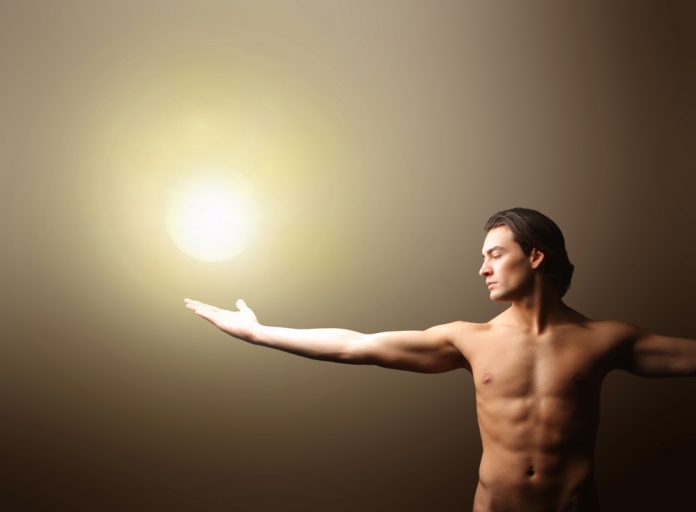Nude art photography is one of those genres that sparks strong opinions. For some, it’s the ultimate expression of beauty and truth in art. For others, it’s controversial, misunderstood, or even taboo. As photographers, that leaves us in an interesting spot. How do you create work that feels both artistic and expressive without tipping too far into one side or the other?
The truth is, nude art photography lives in a delicate balance. On one side is art: the technical craft, the mastery of light, composition, and form. On the other is expression: the raw human emotion, the storytelling, the vulnerability or empowerment the image conveys. Too much emphasis on art, and the work risks feeling cold or clinical. Too much focus on expression, and it may lose structure or clarity.
In this article, we’ll explore how to strike that balance. We’ll dive into history, technique, collaboration, and ethics, with practical advice you can use to ensure your work resonates as both beautiful and meaningful.
Table of Contents
- The Dual Nature of Nude Art Photography
- Historical Perspectives on Art vs. Expression
- Defining Artistic Intent
- The Role of Composition and Form
- Expression Through Emotion and Storytelling
- Lighting as the Bridge Between Art and Expression
- The Photographer–Model Collaboration
- Post-Processing: Refining Art and Preserving Expression<
- Ethical Considerations in Balancing Art and Expression
- Practical Advice for Photographers
- Nude Art Photography is More Than About the Human Form
- FAQs
The Dual Nature of Nude Art Photography
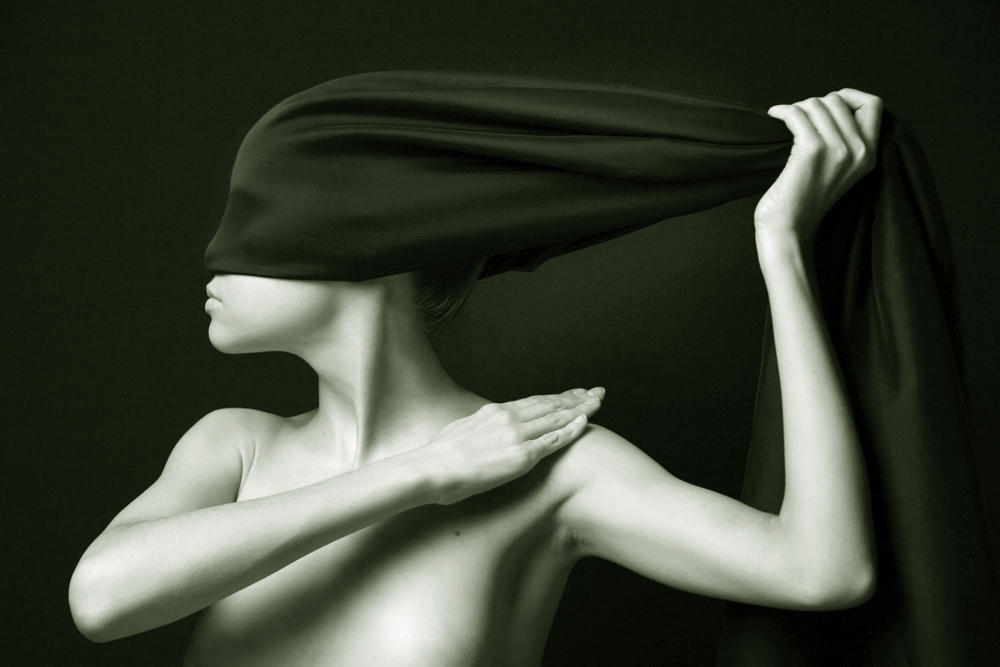
Photo by Egor Mayer via Shutterstock
At its core, nude art photography is both visual design and emotional communication.
- The art side is about structure. Composition, lighting, angles, and technical execution. These are the building blocks that give your photo shape and coherence. Without them, the image can feel messy.
- The expression side is about feeling. A subject’s pose, their gaze, their energy in the frame. All of these communicate vulnerability, power, confidence, or intimacy. Without expression, the photo may look beautiful but hollow.
Imagine two extremes. A perfectly lit, technically flawless photo where the model looks stiff and uncomfortable. It’s art without expression. Now imagine a raw, emotional photo where the model clearly pours their soul into the moment, but the lighting is flat and the composition sloppy. It’s expressive, but the artistic presentation doesn’t carry the weight it could.
The sweet spot is where these two meet, when technical mastery enhances expression, and emotional depth elevates the artistry.
Historical Perspectives on Art vs. Expression
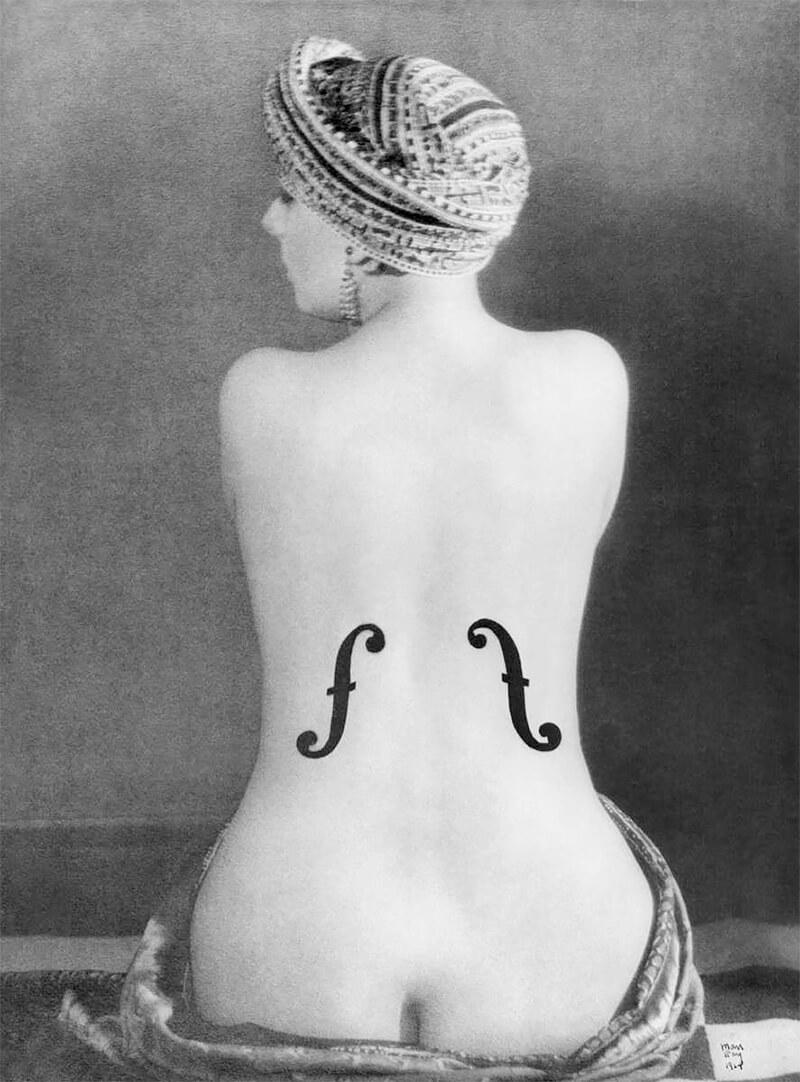
Le Violon d’Ingres by Man Ray 1924
This balance isn’t a new challenge. Artists have wrestled with it for centuries…
In classical sculpture and Renaissance painting, the focus leaned heavily toward art. Figures were often idealized, showcasing perfect proportions and symmetry. These works celebrated form, but often stripped away individuality or vulnerability. Expression was limited to mythological or religious allegory.
Fast forward to the modern era, and the pendulum swung toward expression. Artists began exploring nudity as a means of vulnerability, sexuality, or social commentary. Instead of presenting the “perfect body,” they explored identity, imperfection, and the human condition.
Nude photography inherited both traditions. Edward Weston leaned into form, treating the body as pure design. His nudes resemble seashells, sand dunes, and vegetables. They are abstract and precise. On the other hand, Robert Mapplethorpe used symmetry and bold framing but added powerful, provocative expression, confronting audiences with themes of sexuality and identity. Ruth Bernhard perhaps exemplified the balance best: her sculptural lighting created artful form, while her models exuded emotional presence.
These examples show that balance isn’t about formula. It’s about intent; choosing how much weight to give to each side depending on the story you want to tell.
Defining Artistic Intent
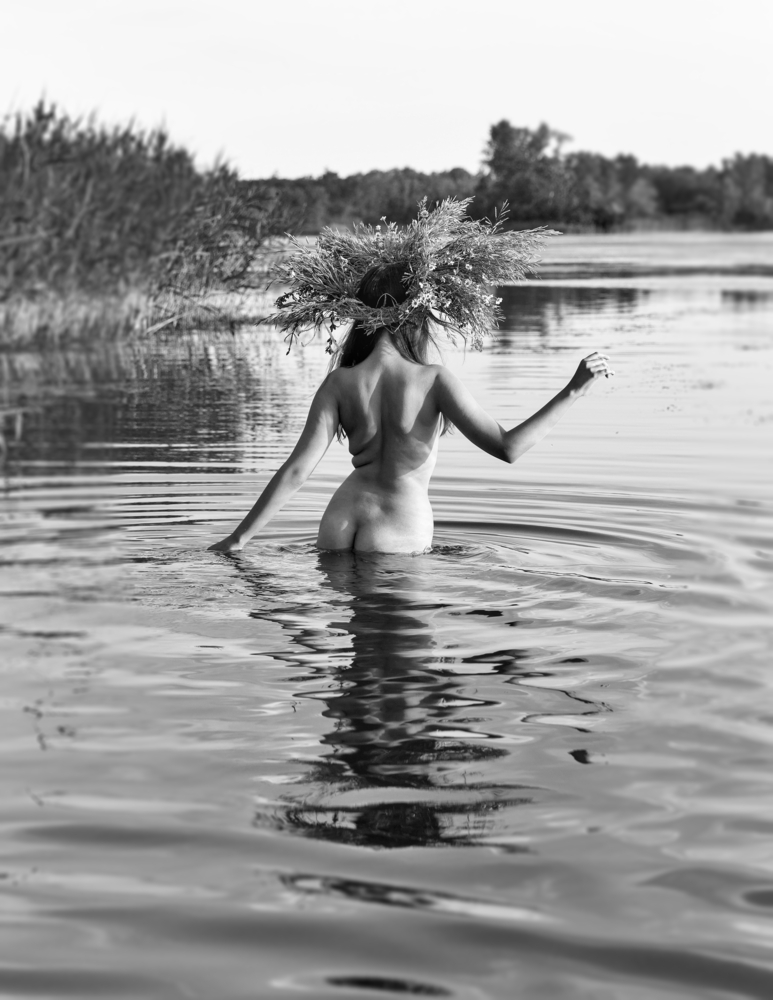
Photo by Sergiy Palamarchuk via Shutterstock
Before you begin a shoot, the most important step is clarifying your why. What do you want to say with the image?
Ask yourself:
- Am I more focused on exploring beauty of form, or depth of story?
- Do I want viewers to admire the image for its technical craft, or feel something deeply when they look at it?
- Am I trying to highlight vulnerability, strength, empowerment, or something else?
This clarity of intent gives you a compass. If you know the goal is vulnerability, you may lean more into expressive poses and softer lighting, while still using artistic tools to frame that vulnerability. If the goal is abstraction, you’ll prioritize compositional precision, but you can still preserve emotional nuance in subtle gestures.
The balance doesn’t come from luck. It comes from defining intent and making every artistic choice in service of that expression.
The Role of Composition and Form
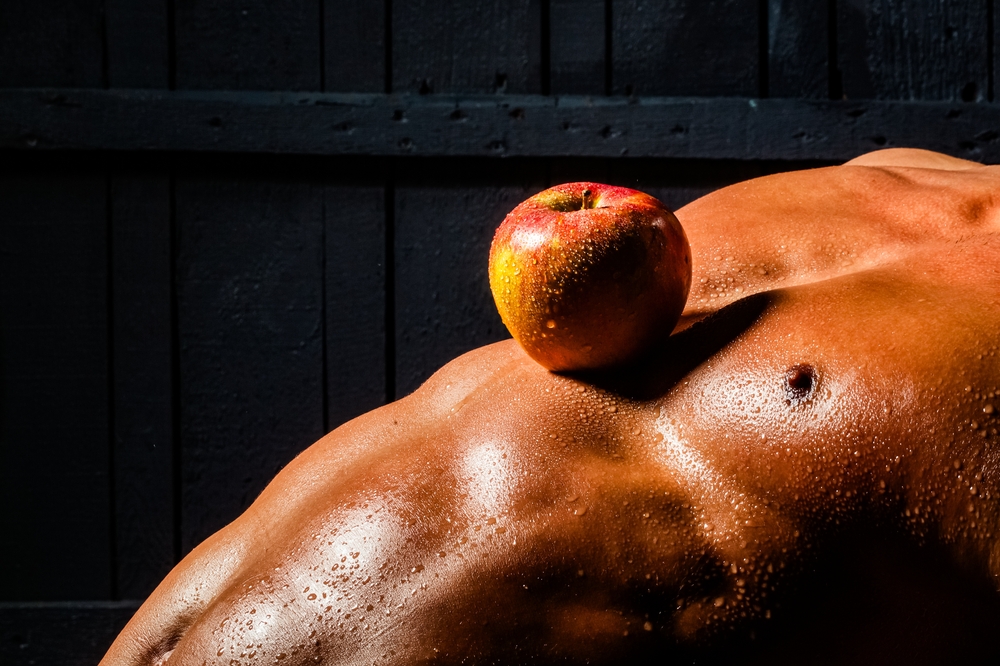
Photo by Volodymyr TVERDOKHLIB via Shutterstock
Composition in nude art is where the “art” side really comes alive. The arrangement of visual elements in your frame controls how viewers experience the image.
- Rule of Thirds: Placing the body off-center can create dynamism and tension.
- Symmetry and Balance: Mirrored poses or central framing communicate harmony and control.
- Leading Lines: Outstretched limbs or environmental lines guide the viewer’s eye through the image.
- Framing: Natural frames like windows or shadows can isolate and emphasize the body.
The human body itself offers unique compositional possibilities. Curves suggest softness, angles suggest strength. Cropping can transform a torso or shoulder into near-abstract design. Negative space can make a subject feel either isolated or expansive.
But there’s a caution here. Too much emphasis on composition risks creating images that feel sterile, like anatomy studies rather than art. The trick is to let form create structure while leaving room for expression to breathe.
Expression Through Emotion and Storytelling
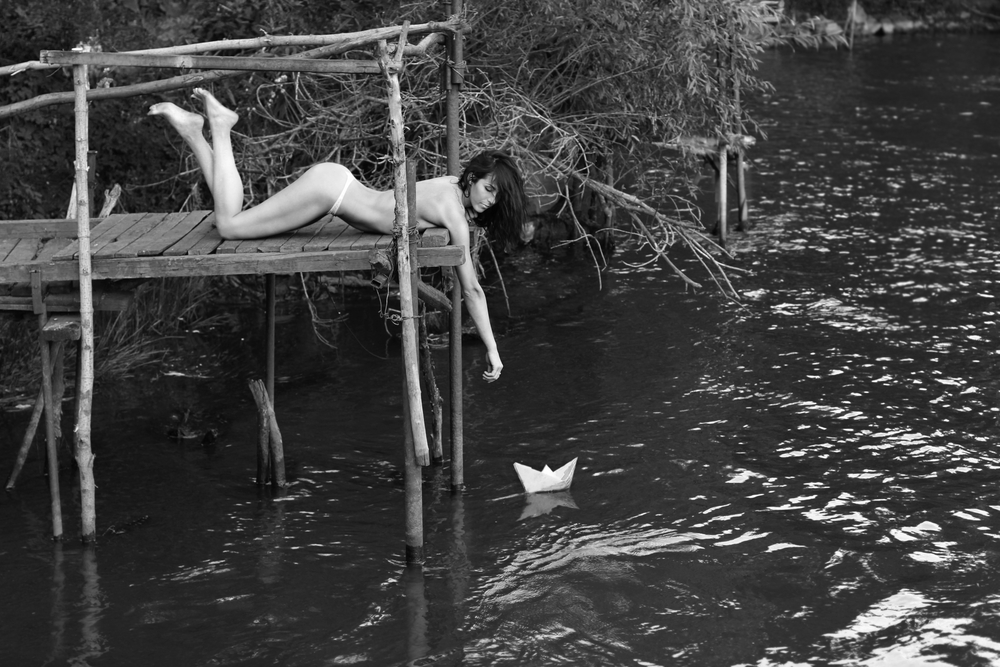
Photo by Belovodchenko Anton via Shutterstock
Expression is what makes an image resonate emotionally. In nude art, the body is both the subject and the storyteller.
- Poses and Gestures: A curled posture might suggest fragility, while open, expansive stances communicate confidence.
- Facial Expressions: Direct eye contact can confront or invite the viewer, while an averted gaze adds introspection or mystery.
- Body Language: Subtle details like tension in hands or relaxation in shoulders can dramatically shift the mood.
Storytelling also plays a role. A subject framed against concrete might tell a story of confinement, while one in nature suggests freedom. The story doesn’t have to be literal. It can be abstract or emotional.
The key is authenticity. Overly staged “expressive” poses can feel as empty as overly technical compositions. True expression often comes from collaboration, where the model feels empowered to bring their own presence and emotion into the frame.
Lighting as the Bridge Between Art and Expression
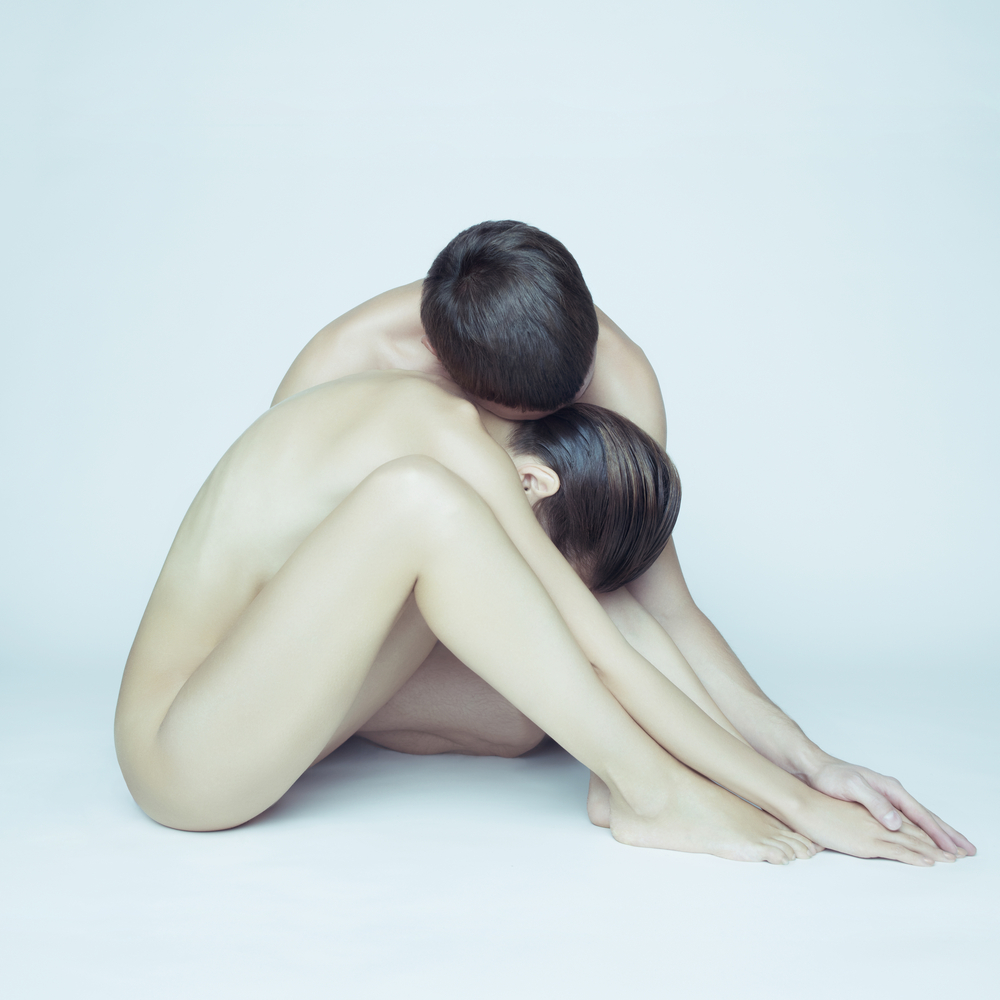
Photo by Egor Mayer via Shutterstock
Lighting is where art and expression meet most directly.
On the technical side, lighting shapes form. Side lighting sculpts muscles, front lighting reveals clarity, backlighting creates silhouettes. These are artistic decisions that define the image’s structure.
On the expressive side, lighting creates mood.
- Soft window light feels intimate and vulnerable.
- Harsh directional light feels dramatic, even confrontational.
- Warm tones evoke closeness, while cooler tones create distance.
The best lighting decisions do both. For example, using strong side light might emphasize the subject’s physical strength (art) while also adding emotional intensity to the image (expression). Light isn’t just illumination. Instead, it’s a language used to convey the message in your images.
The Photographer–Model Collaboration
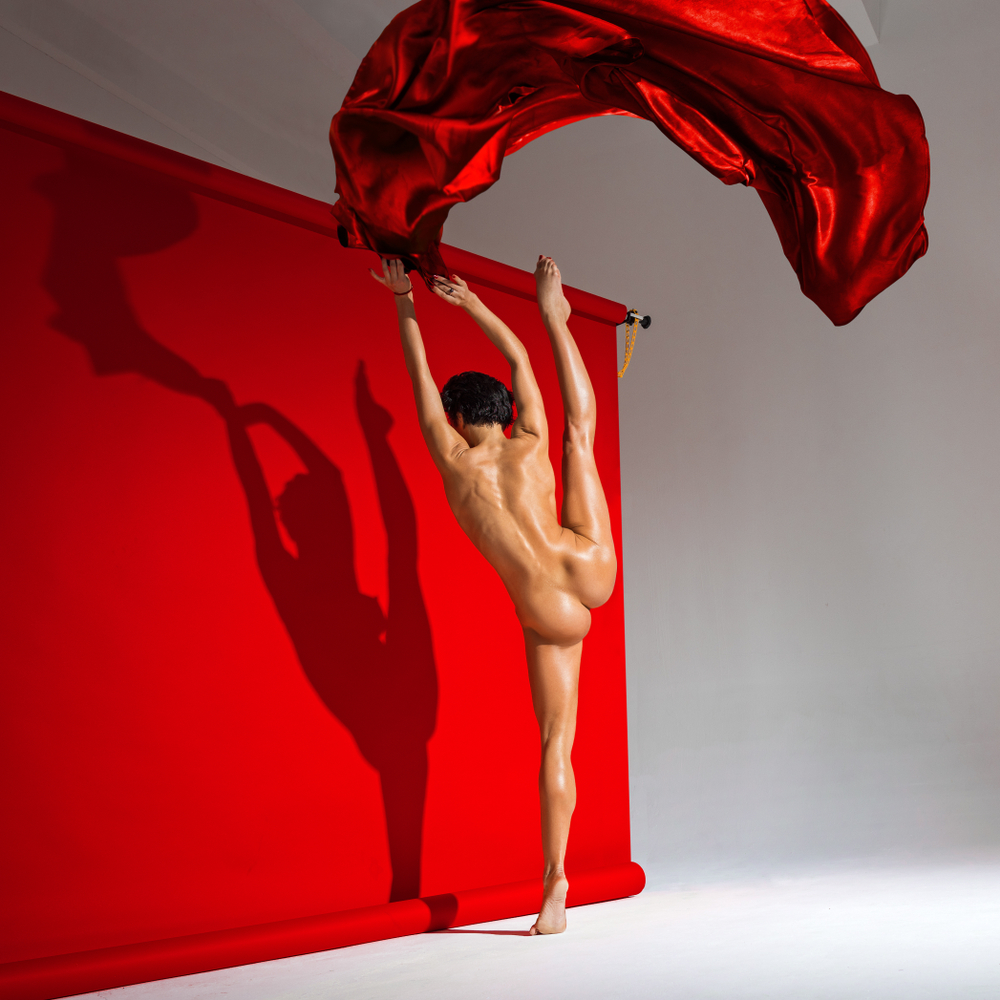
Photo by Sidorenko Olga via Shutterstock
No discussion of balance would be complete without emphasizing collaboration.
Nude art photography is uniquely intimate. Without trust, the work will either look flat or feel exploitative. The best balance happens when the photographer and model work as partners.
- Discuss Intent Early: Share your vision, whether it’s about form, emotion, or story. Ask for the model’s perspective.
- Encourage Input: Models often bring ideas for poses or expressions that enhance both artistry and authenticity.
- Check In During Shoots: A simple “How are you feeling?” ensures comfort and can lead to more genuine expression.
- Celebrate Collaboration: Acknowledge the model’s role as co-creator.
When both sides feel invested, the images naturally carry both artistic polish and expressive depth.
Post-Processing: Refining Art and Preserving Expression
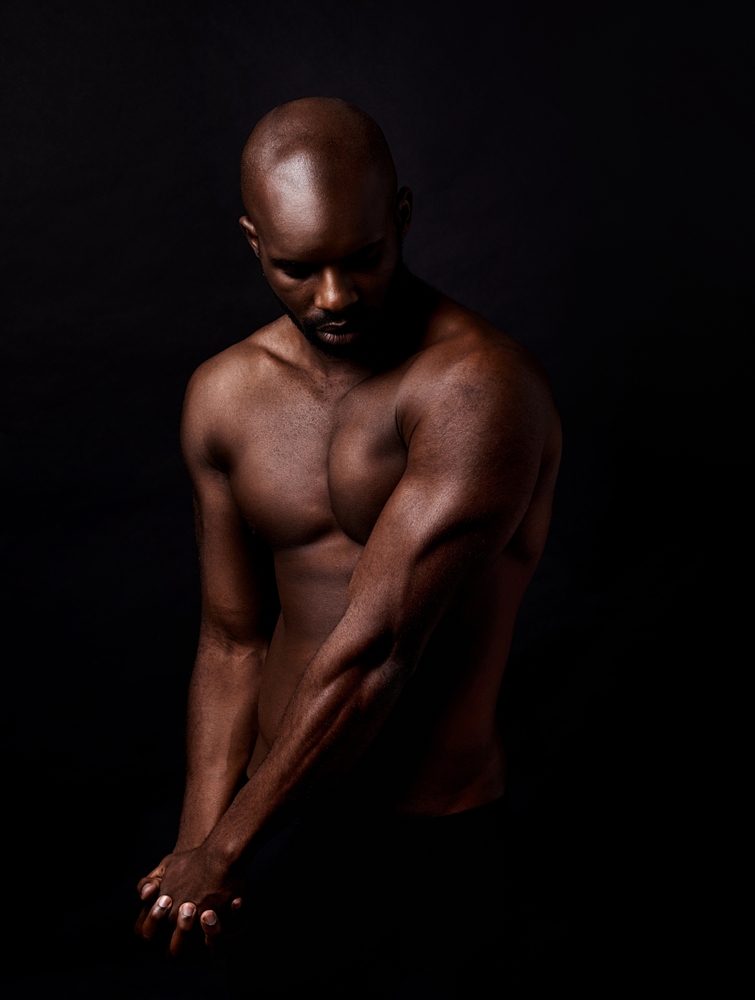
Photo by PeopleImages via Shutterstock
Editing is where you can fine-tune the balance between art and expression.
- Cropping: Tightening the frame can improve composition, but be mindful not to strip away emotional context.
- Contrast and Tone: High contrast can emphasize strength; softer tones enhance intimacy.
- Texture: Preserving natural skin detail adds honesty, while over-smoothing can sterilize expression.
- Sequencing: In series or portfolios, the order of images can build rhythm and narrative.
The golden rule: editing should enhance what’s already there. Avoid over-processing that makes the image feel artificial or strips away authenticity.
Ethical Considerations in Balancing Art and Expression
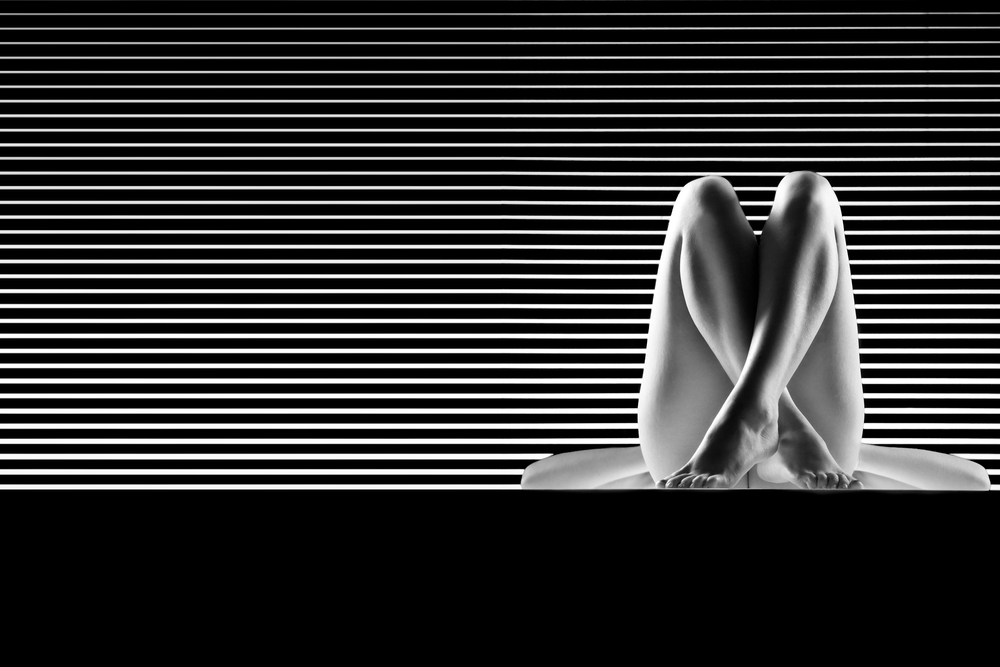
Photo by Comaniciu Dan via Shutterstock
Artistic freedom doesn’t exist in a vacuum; ethical considerations are always part of the equation.
- Consent Beyond Nudity: A model may be comfortable posing nude but not with certain expressive narratives (e.g., vulnerability or sexuality). Always clarify.
- Avoid Objectification: Cropping or framing that reduces a model to body parts can feel demeaning unless it’s discussed and intentional.
- Responsible Presentation: Consider where and how you’ll share expressive images, especially online where context can be lost.
- Respect Identity: Expression is personal. Ensure your vision aligns with how your subject wants to be portrayed.
Balancing art and expression responsibly doesn’t dilute creativity; it strengthens trust and elevates the work.
Practical Advice for Photographers
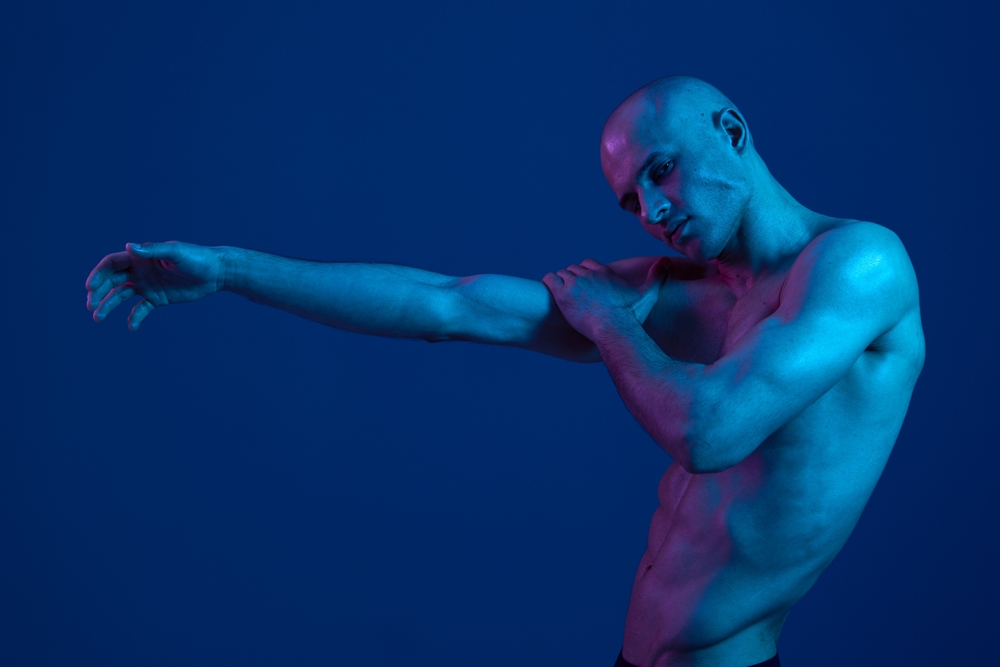
Photo by ShotPrime Studio via Shutterstock
Balancing art and expression takes practice. Here are some tips to help:
- Start Structured, Then Loosen: Begin with well-composed poses, then invite the model to move naturally and express themselves.
- Experiment with Lighting: Try setups that highlight both form (technical) and mood (expressive).
- Review Together: Show models images mid-shoot. Their feedback can guide adjustments that improve both sides.
- Curate Thoughtfully: In your portfolio, mix technical masterpieces with emotionally resonant images to showcase balance.
- Stay Patient: Balance doesn’t happen overnight. The more you practice, the more instinctively you’ll combine art and expression.
Nude Art Photography is More Than About the Human Form
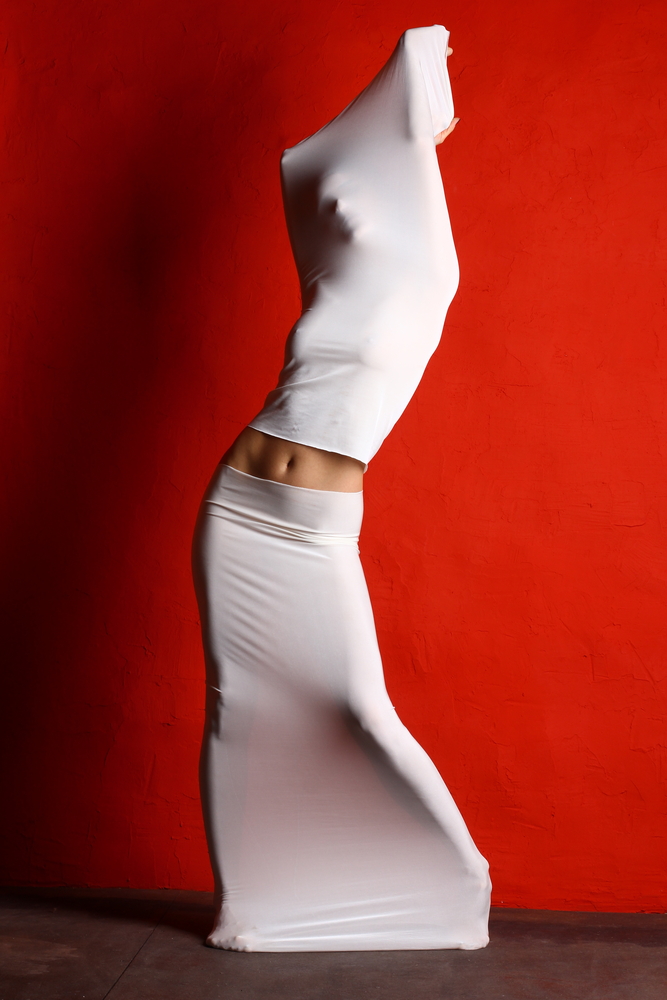
Photo by Belovodchenko Anton via Shutterstock
Nude art photography isn’t just about capturing the body. It’s about weaving together two powerful forces: the structure of art and the vulnerability of expression. Too much of one and the work feels unbalanced. But when both are present, the result is images that are not only beautiful but deeply moving.
As a photographer, your role is to define your intent, master your craft, and collaborate with your subjects to create work that feels both polished and authentic. The balance won’t always be perfect, but striving for it is what makes this genre so rewarding.
At its best, nude art photography shows us not just what a body looks like, but what it feels like to be human. And that balance of art and expression is what transforms photographs into art that endures.
FAQs About Nude Art
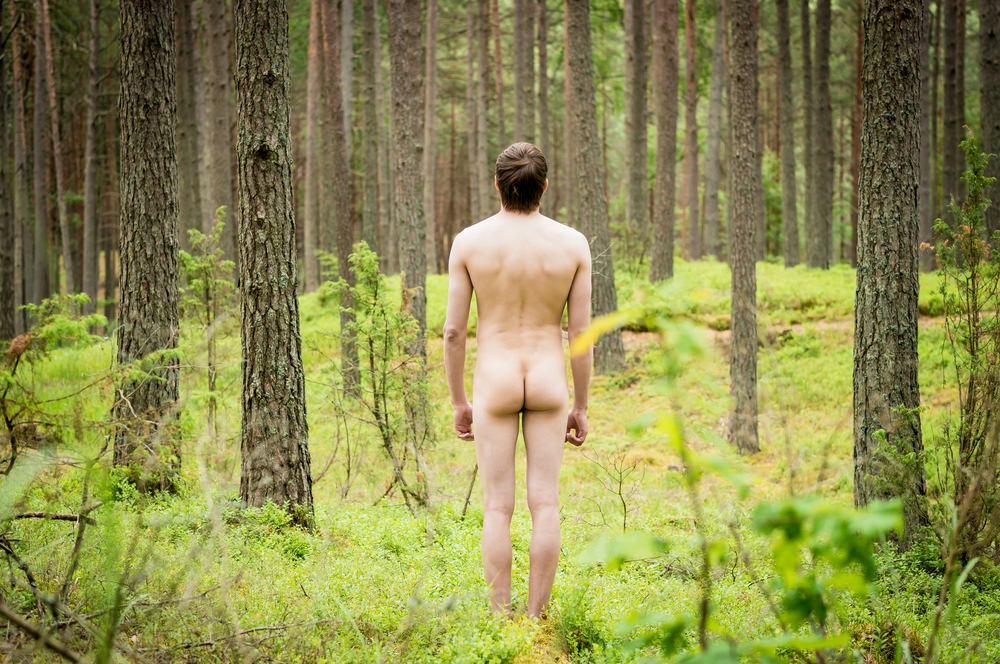
Photo by KIRAYONAK YULIYA via Shutterstock
What is nude art photography?
Nude art photography is a genre that explores the human body as a subject of artistic expression, combining technical mastery with emotional storytelling. It focuses on form, composition, lighting, and emotion rather than erotic content.
How do photographers balance art and expression in nude photography?
Balance is achieved by combining technical elements—like composition, lighting, and form—with expressive elements such as emotion, body language, and storytelling. Neither side should overpower the other.
What role does lighting play in nude art photography?
Lighting shapes the form of the body and sets the mood. Soft light can evoke intimacy, while dramatic lighting can convey strength or tension. Effective lighting bridges technical artistry and emotional impact.
How do nude art photographers avoid objectifying the subject?
By focusing on intentional framing, maintaining context, collaborating with the model, and portraying the subject as a full person rather than isolating body parts.
How can a photographer prepare for a nude art shoot?
Clarify your artistic intent, plan lighting and composition, communicate openly with the model, and establish a collaborative environment where comfort and creativity thrive.
Why is collaboration with the model so important?
Nude art photography is intimate. Trust and communication ensure that the subject feels empowered, resulting in images that convey both emotional expression and technical artistry.
What ethical considerations should photographers keep in mind?
Obtain informed consent, avoid objectification, respect the model’s identity, and present images responsibly, especially in public or online spaces.
Friendly disclaimer: Our articles may contain affiliate links that support us without costing you more, and sometimes we spice things up with sponsored content—but only for products we truly stand behind!
Hero Photo by Ollyy via Shutterstock

